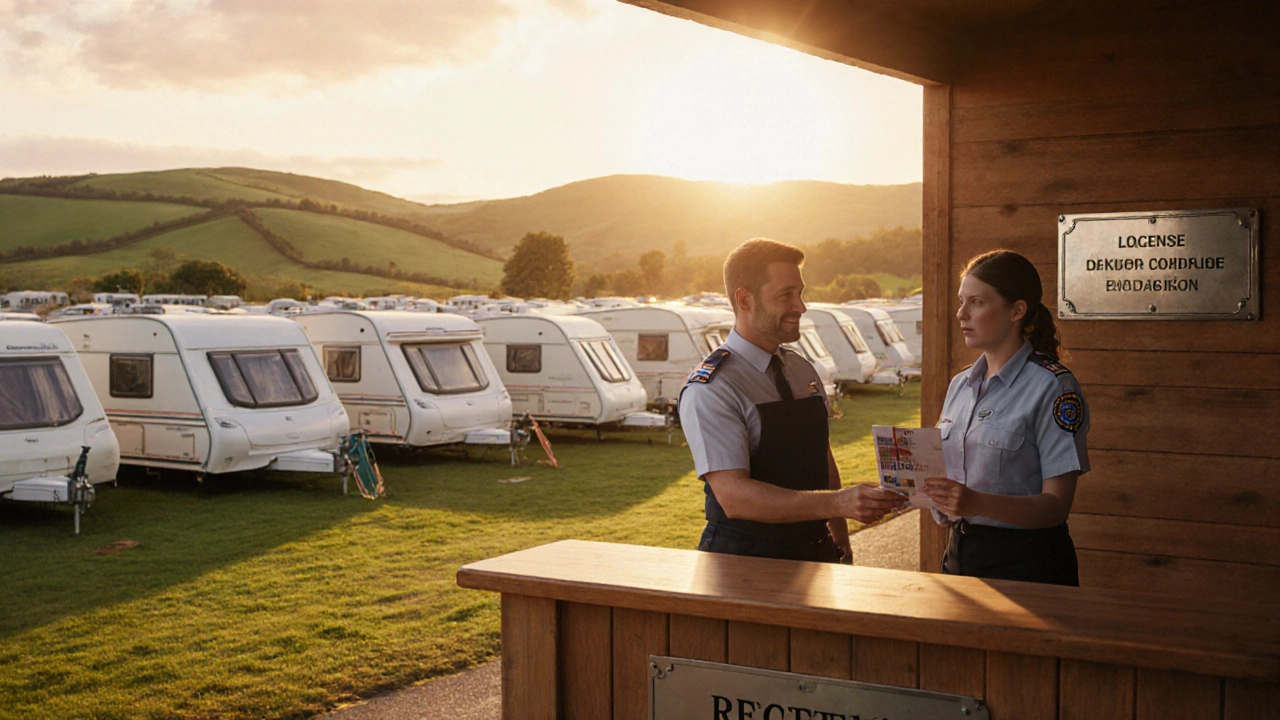
UK Campsite Rules: A Complete Guide for 2025
Discover the essential UK campsite rules for 2025, from licensing and fire safety to pet policies, waste management, and accessibility. Stay compliant and enjoy a hassle‑free camping experience.
Read MoreWhen you’re mapping out a motorhome road trip or a weekend tent escape, getting a grip on UK campsite rules, the set of guidelines and legal requirements that govern how and where you can camp in the United Kingdom. Also known as camping regulations UK, it shapes everything from where you can park your motorhome to how you dispose of waste. UK campsite rules aren’t a random collection of rules; they encompass different campsite types, categories like luxury glamping sites, family‑friendly grounds and back‑country wild spots and require you to match your gear and plans to the right category. Knowing the type of site you’re heading to tells you which amenities you’ll find, what fees apply and which restrictions you must respect.
One big piece of the puzzle is wild camping, the practice of setting up a tent or motorhome outside designated campgrounds. In England and Wales, the law essentially says you need landowner permission, while Scotland offers a “right to roam” that makes wild camping far more straightforward. That difference influences how you plan a route: if you’re chasing remote mountain views, you’ll lean on Scottish guidelines; if you’re staying in the Midlands, you’ll need to scout for farms or estates that welcome campers. The rule that wild camping is legal only where you have consent influences the overall strategy for a road‑trip itinerary and shapes the gear you pack, especially water and waste solutions.
Another critical strand is motorhome regulations, the specific laws covering driving, parking, waste disposal and on‑the‑move living in motorhomes across the UK. These rules dictate where you can pull over for a night, whether you need a special licence for a vehicle above a certain weight, and how to use the built‑in toilet safely while on the move. For example, you’re required to empty waste tanks only at approved facilities, and you can’t use the toilet while the vehicle is in motion. Understanding these points enables you to avoid fines and keep your trip smooth, especially when you’re hopping between sites that have different local bylaws.
Safety doesn’t stop at legalities; it’s also about camping safety, practices that protect you from hazards like fire, carbon monoxide, weather extremes and theft. Across the UK, many campsites require you to follow fire bans during dry periods and to keep portable heaters away from flammable materials. Carbon monoxide detectors are mandatory in many motorhome parks, and you’re expected to have a working smoke alarm when you stay in a site that offers on‑site electricity. By treating these safety steps as part of the rule set, you turn a potential risk into a routine check‑list, letting you focus on the scenery rather than worrying about mishaps.
All these pieces—campsite types, wild camping, motorhome regulations and safety practices—form a network of interlinked requirements that shape a successful outdoor adventure. Below you’ll find a hand‑picked collection of guides that dive deeper into each area, from how to pick the right campsite type for your family to the nitty‑gritty of legal wild camping in Scotland, and from motorhome waste‑management hacks to essential safety gear. Use these resources to build a plan that respects the rules while giving you the freedom to explore Nottinghamshire and the rest of the UK at your own pace.

Discover the essential UK campsite rules for 2025, from licensing and fire safety to pet policies, waste management, and accessibility. Stay compliant and enjoy a hassle‑free camping experience.
Read More